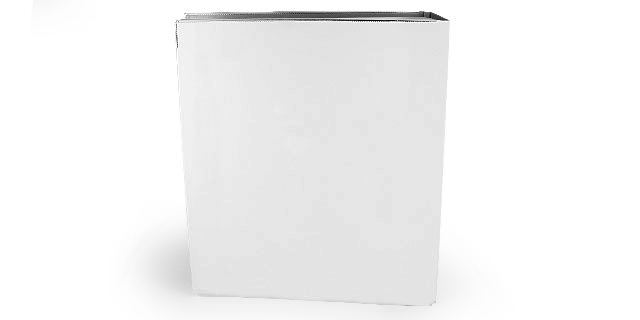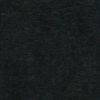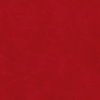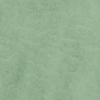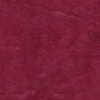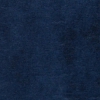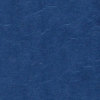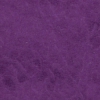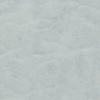Press Guard is a multi-ply printable paperboard consisting of a sulfate or sulfite base compressed to an extreme density and hardness.
Adhesives:
Press Guard can be bonded to most materials. We recommend a dextrin adhesive but suggest you consult our technical department or your adhesive supplier, depending on your particular end use.
Cutting and Die Cutting:
Press Guard can be guillotine, rotary or die cut. For guillotine cutting, we recommend a double beveled blade with bevels of 30°/26°. All normal steel ruled die cutting processes may be used on PressGuard. It can be cleanly punched and will readily accept all conventional fasteners, such as grommets in one or two pieces, sewing, etc. In case of rotary slit pieces, we recommend the cutting be done by Long Falls Paperboard. Our rotary slitters are extremely accurate and we can guarantee close tolerances. Due to the high density of PressGuard, special attention should be given to maintaining a sharp blade during trimming and die cutting.
Decorative Overlay Laminating:
Pressboard lends itself to conventional coating and laminating techniques. Laminating and adhesives should be applied to the least glossy side for optimum performance of the laminating adhesives and to ensure a flat end product. Depending on your end use, we recommend that you consult your laminate supplier for specific recommendations.
Inks:
For best performance with Press Guard, use normal quick-drying inks. This helps to avoid set-off. It is also recommended that opaque inks be used for all methods of printing to minimize any show through. To avoid any ink problems, be sure to consult your ink maker for properly formulated inks. Be sure to explain to the ink maker the end use, the method of printing and the performance desired from the inks.
Offset Printing:
Press Guard can be printed by offset lithographic, flexographic, letter-press and screen printing techniques. Press Guard in .015" will run well under all of these printing methods. Any pressboard heavier than.020", if printed offset, should be printed on a press that has no feed rolls, but utilizes a swing feed.
Press Requirements:
The lifts should be removed from their containers a few hours prior to the press run, and should be kept wrapped until shortly before printing. Press Guard should be run in lifts of not more than 1,000 sheets, depending on the amount of ink coverage. With experience, larger lifts can be run. For make ready, use a coated stock of the same caliper as the Press Guard, but it is important to bring up the color on a small amount of Press Guard prior to printing. If the need arises to stop the press, be sure to use some waste sheets to bring up the color before resuming the printing. For offset lithography, both ink and water should be run normal, as in any other coated bristol. The impression cylinder should be set for about the same approximate pressure used on equal caliper coated bristols. A medium offset spray is recommended but when more than four colors are being run in separate passes, a fairly heavy spray should be used. Until the printer is familiar with the handling of PressGuard, he can avoid any set-off by drying the sheets in small lifts of one thousand or under.
Protective Coatings:
Any of the conventional protective coatings used on coated papers and coated bristols can be used without any problem on Press Guard. The end use of the product would determine the necessity for protective coatings. Pressboard Products can provide a variety of coatings and embossed finishes.
Scoring and Bending:
Press Guard is a very dense and stiff paperboard which can be scored and bent to make hinged covers provided the operation is within the requirements of this material. For specific guidelines, please refer to Scoring and Bending Pressboard, outlined below.
To fold or bend Press Guard, the stiffness of the sheet at the bending line must be lowered, and a flexible hinge formed within the sheet itself. A satisfactory score must reduce the bonding strength between the individual plies of the pressboard sheet, so that the plies will delaminate when the board is folded on the score line. In addition, the width of this delamination portion must be great enough to allow the stock to squeeze down into the bead on the inside of the bend, so that a fulcrum is not formed near the surface of the sheet which will rupture the outside ply when the bend is made. The "hinge" effect is achieved only when the inside of the bend is on the female die side (protruding side after scoring).
Pressboard scores and bends much better when processed with its normal (as manufactured) moisture content. Pressboard which has been allowed to lose its normal moisture by exposure to low humidity atmospheres is more likely to crack when scored and bent, due to the dry condition of the sheet. This is most likely to occur in the fall and winter when outside relative humidities are low, and inside relative humidities are reduced even more when the air is heated. However, if this is not practical, it is essential that the pressboard be left in the shipping packages or kept in covered piles until scored and bent if best results are to be obtained.
It should be remembered that pressboard does have a grain which is in the direction of last dimension on sheet sizes. Automatic folding is not recommended for Press Guard. If there are questions regarding grain direction, contact your local pressboard supplier.
Silkscreen Printing:
Press Guard is an excellent performer for silk screen-printing. However, it is recommended that in silk screen printing that quick-drying gloss inks be used instead of the more conventional non-gloss inks. The pressboard can be either air dried on racks or through tunnel dryers. However, if tunnel dryers are used, temperatures should be kept at a minimum.
Pressboard Scoring and Bending
Scoring And Bending Pressboard (.015" - .030")
Pressboards are very dense and stiff paperboards. They can be scored and bent to make very satisfactory hinged covers providing the operation is within the limits required for this particular material. Pressboards manufactured by Long Falls Paperboard, which are designed to be scored and folded include Genuine Pressboard™, Norval® and Press Guard®. Before getting into specifics, the fundamentals of scoring and bending pressboard should be reviewed as follows:
To fold or bend pressboard, the stiffness of the sheet at the bending line must be lowered and a flexible "hinge" formed within the sheet itself. This is done by scoring.
A satisfactory score must reduce the bonding strength between the individual plies of the pressboard sheet, so that the plies will delaminate when the board is folded on the score line. In addition, the width of this delamination portion must be great enough to allow the stock to squeeze down into the bead on the inside of the bend, so that a fulcrum is not formed near the surface of the sheet which will rupture the outside ply when the bend is made. The "hinge" effect is achieved only when the inside of the bend is on the female die side (protruding side after scoring). Cross sections of good and poor scores are shown in the attached photographs.
Pressboard scores and bends much better when processed with its normal (as manufactured) moisture content. Pressboard which has been allowed to lose its normal moisture by exposure to low humidity atmospheres is more likely to crack when scored and bent, due to the dry condition of the sheet. This is most likely to occur in the fall and winter when outside relative humidities are low, and inside relative humidities are reduced even more when the air is heated.
However, if this is not practical, it is essential that the pressboard be left in the shipping packages or kept in covered piles until scored and bent if best results are to be obtained.
From the results of thousands of BRDA bending tests, the following recommendations are made for scoring pressboard:
To make a score wide enough to give satisfactory bending bead, the width of the male rule of the die should be at least 2.5 to 3.0 times the thickness of the board. A slightly wider male die should cause no ill effects, provided that the opening of the female dies is properly proportioned.
The edges of the male rule which contacts the board should be rounded off to form a semi-circular "nose" (radii of rounded edges approximately equal to half the thickness of the male rule).
The male rule should penetrate the female die from .003" to .010" (see recommendations below) when the die is closed with no board in place. If the die is designed to operate without stops by having the die close against the board itself, then the female groove should be from .025" to .035" deep.
The difference in width between the opening of the female groove and the male rule should be 2.5 to 3.5 times the thickness of the board being scored to properly delaminate the plies of the sheet. Differences less than this can result in edge cracking at the score and differences greater may result in inadequate delamination.
The groove of the female die should be square with the upper edges rounded slightly to prevent cutting (edges should be "just broken").
When the board is to be bent a full 180°, double scoring may be used to improve performance of the hinge and to provide space within the bend for fasteners.
Scoring should run across the grain for a stronger, longer lasting score.
The following die geometries are recommended for the respective gauge pressboard.
(Steel rule dies are considered 0.014" per "point".
Example: a 3 "point" rule is 3 x 0.014" or .042")
Recommended for .010" board
Rule* 2 point
Male Rule Width .028
Female Width .062
Difference .034*
Note: Penetration of the male die is .003.
Rule* 4 point
Male Rule Width .056
Female Width .118
Difference .062*
Note: Penetration of the male die is .010.
* - Die and score recommendations were confirmed using a BRDA bending tester.
Examples Of Best Scoring/Bending
For best scoring/bending the score (creasing) should run across the grain (fibers).
Example Ring Binder
Length of sheet
Scoring (creasing) across the grain
* For Genuine Pressboard™ and Press Guard® (.015", .020", .025", .030")

